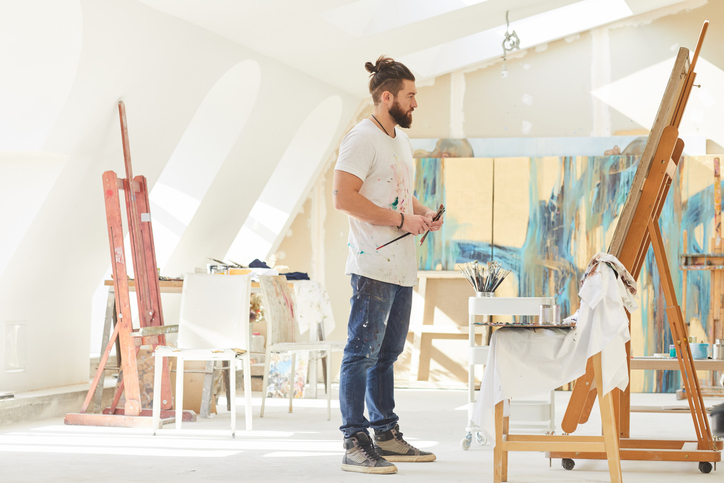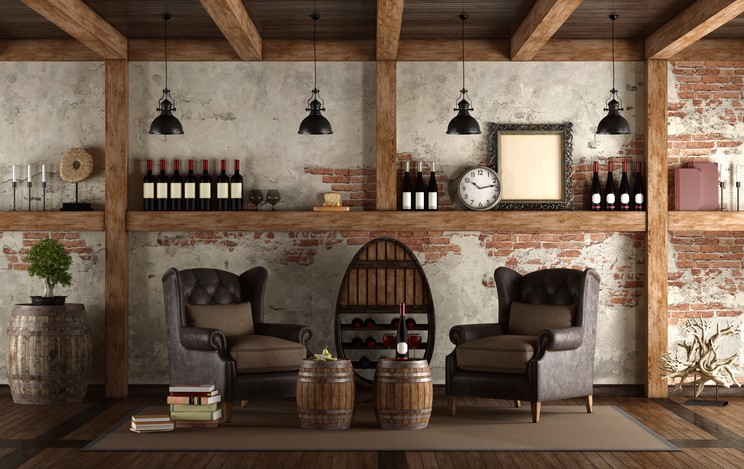Every piece of furniture tells a story. It’s been a witness of extraordinary events or has stored special objects, which is why every piece is magical.
Nowadays, it is increasingly difficult to find high-quality wood furniture versus the now standard MDF or plywood.
If you own a piece of furniture that you love but think is outdated, don’t throw it out; revamp it instead. If, on the other hand, you’re thinking of buying new furniture, you can go for second-hand items and renovate them to suit your style! It’s also an eco-friendly way of revamping your home.
We’ve reached out to furniture renovation experts to give you the best tips, tricks, and techniques to renovate your furniture. For the painting edition check out this article.
Keep reading and discover what these experts have to say about various aspects of the renovation and restoration of furniture.
Carpentry
-
How do I know if my piece is wood and not MDF or plywood?

Photo by Peggy Farabaugh
“Telltale signs of solid wood furniture include:
· Unique grain patterns that carry through the wood as seen at the edges of each board (A)
· Dovetail joinery on drawers (A)
· Weight – solid wood is heavy
Plywood is easily spotted as it’s made of thin sheets of wood, glued together (B). MDF, pressed wood, and particle board are usually covered with a paper-thin sheet of veneer, which peels off easily (C) and can often be seen where two pieces of wood are joined (D)”
– Peggy Farabaugh | Vermont Wood Studios
-
I like the wood grain but would like to change the color; how do I paint the wood to keep it looking natural and showing the grain but with a different color?
“The finished wood must be stripped of its finish first. The wood should then be fine-sanded, with sandpaper grits ranging from 120 to 180, to 280. Then it must be dyed (rather than stained) to retain the natural look. After, apply a primer/sealer, shellac or oil polyurethane or possibly oil finish, and then fine sand it with 360 grit sandpaper, apply a top coat of finish, fine sand again, and apply another top coat of finish. Then rub out the finish with a super fine steel wool, then wax. You will have a beautiful piece of wood, with the natural-looking finish!”
– Peter Triestman | Olek
-
A part of a furniture piece is chipped, the wood has scratches and dents; how do I restore it while keeping it with a natural look?
Disguise scratches – Depending on the scratches’ severity, the best method for disguising scratches is to lightly sand the piece and re-apply the finish. Having said that, Howard has a Refinishing Treatment that can be used to hide light scratches – without having to sand beforehand.
Repairing chips or dents – Epoxy putty is the woodworkers’ go-to material for repairing furniture. Combine the 2-part epoxy putty and mold to fill any dents. Sand smooth before the putty sets rock hard.
– Janice Anderssen | Home-Dzine
- Which are the basic tools someone needs to start doing a bit of woodworking?
“When I began woodworking, I honestly felt intimidated by using power tools and didn’t want to invest a lot of money in them right away. Some basic tools such as screwdrivers, a hammer, a combination square, a hand saw with a miter box, a jigsaw, clamps, a palm sander, a hand plane, and a chisel set come in handy when you’re just starting out.
What are some simple things someone can do at home when doing furniture renovation?
A couple of simple ways to completely change a piece of furniture is giving it a new paint color and changing the existing hardware. The fabric on a dining chair can be easily swapped out to something that suits your decor and personality.”
Tricia Wright | Simplicity in the South
-
What’s an easy way to repair damaged corners on a furniture piece?
“The key thing to remember when repairing broken furniture corners is that it’s necessary to use a strong enough material to withstand possible bumps. My choice is usually a polyester resin, available as Bondo is most home improvement centers. Mix the resin with the catalyst, apply the in two or three layers to build up the missing material. When the mixture has just begun to firm up, remove any excess by trimming it away with a utility knife. Once the resin has hardened, it can be shaped with a file, rasp, or sandpaper wrapped around a wood block or dowel. I usually paint the repair with artists’ water-based acrylic paints, using two or three colors to match the surrounding wood and grain—topcoat with polyurethane or shellac for protection and sheen.”
Ron Hazelton | RonHazelton
- Chairs are the most common repair, what tips would you give to keep them in better shape and some easy repairs people can do?
The best tip I have for keeping your chairs in good shape is to keep the words my grandfather (a restorer and cabinet maker) used to repeat like a mantra when I was a little boy, eating at the family dining table. “Don’t tip that chair backwards onto its back legs, I can hear it crying”. As to what the owners of actual chairs can do – the best thing is to note when a chair has developed any loose joints and it’s a little wobbly. It’s at this point, if reglued, you will prevent more serious damage – but it’s really best to send them to a professional. Chairs are notoriously difficult to reglue without an enormous number of clamps and a fair bit of know-how.
Matthew Crawford | After Noah
Finishing Techniques
-
How do you protect the paint while maintaining a satin look but not glossy?
“When reclaiming your furniture with Mango Paint, the best way to seal your project is using our Natural Beeswax Furniture Finish OR our Table Top Finish. Both products add durability to your painted furniture piece. Natural beeswax is easily worked right into your painted project and provides a beautiful luster while also adding depth to the paint. Our Table Top Finish is used for high traffic areas such as tabletops or desktops. It’s available in both Satin and Flat finishes. The flat finish is quickly becoming an industry favorite for its ease of use and beautiful flat finish.”
– Melanie Curley | Mango Reclaimed
-
How do you use different wax colors to create different types of finishings?
“Using colored waxes on painted furniture highlights detail differently depending on how it’s used and the details. For example, it can be applied into recessed crevices or corners and wiped over, leaving the wax in the crevices for an aged look. When chalk paint is applied, creating a textured finish, a colored wax applied over the paint will highlight the textured surface and give it dimension.
It’s best to apply clear wax over the entire surface using a good quality, natural bristle brush before applying a colored wax. It provides a barrier between the paint and the colored wax so that if too much color is applied, it can be easily wiped away, whereas if colored wax is applied directly to the paint and it’s too dark, it may not be able to be corrected.
White wax over brighter colors tones them down and highlights detail while still allowing the vibrant color to shine through. Over darker colors like navy blue or deep grey, it gives a coastal, rustic, weathered feel. White wax over natural timber can provide the finish a white-washed look.
Darker waxes like black and brown are very effective over light and medium tone neutrals like greys and beiges. Blues with brown wax over them look rich and elegant. Black wax over mustard yellow is beautiful beyond words.
A basic guide to choosing which colored wax to use is contrast, darker waxes over lighter colors, and a lighter wax over darker colors. That being said, black wax over medium to darker reds or greens is exquisite.”
– Katie | For the Love Creations
-
What are the different topcoats and sealers I can use?
1) Wax – Used mainly for a natural, bare matte look. It is not as durable as the other finishes.
2) Water-based clear coats – Better durability than wax. It offers a shorter cure time, less VOC’s and easier water-based cleanup than oil-based clear coats.
3) Oil-based clear coats – Cures to a harder finish, so some people say it’s more durable than water-based sealers. It also has higher VOC’s and cleanup requires paint thinner.
4) Shellac finish- A non-toxic, natural sealer that dries to a plastic-like finish and is an excellent option for non-wood finishes.
5) Lacquer – It is one of the most durable topcoats and is resistant to water and acid. It comes in a few different sheens and is capable of producing a high gloss finish. It is fast drying and is best applied with a sprayer.
– Lindsey Manning | Repurpose and Upcycle
- When working with a wood that’s in really bad shape how do you bring out its natural beauty?
Ann Bacon | The Apple Street Cottage
Revamping your furniture is a relaxing activity that awakens your creativity, as well as helping you discover new talents. Click here to our Furniture Renovation Q&A Painting Edition, where experts in this area tell us their secrets to get the ultimate paint job.
This article is still developing.




